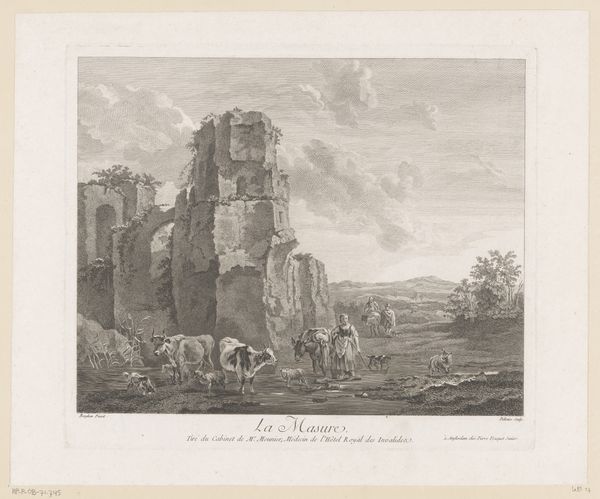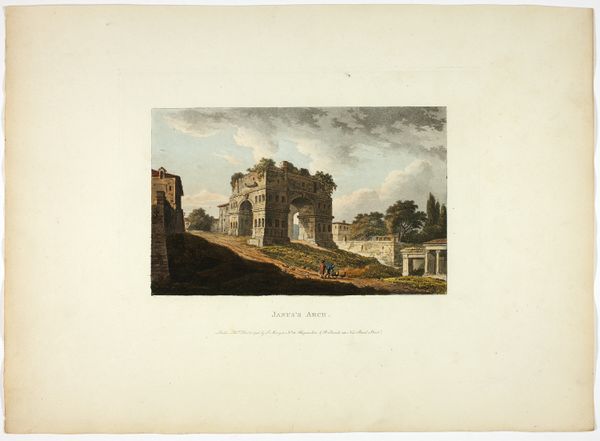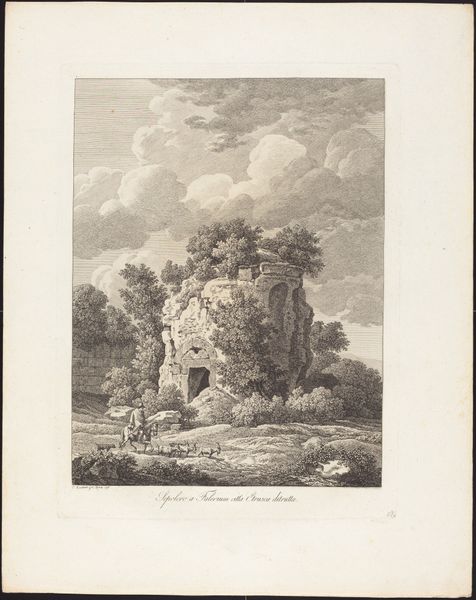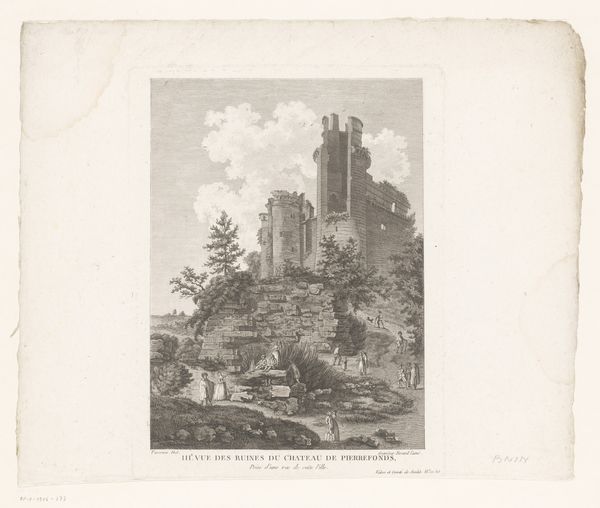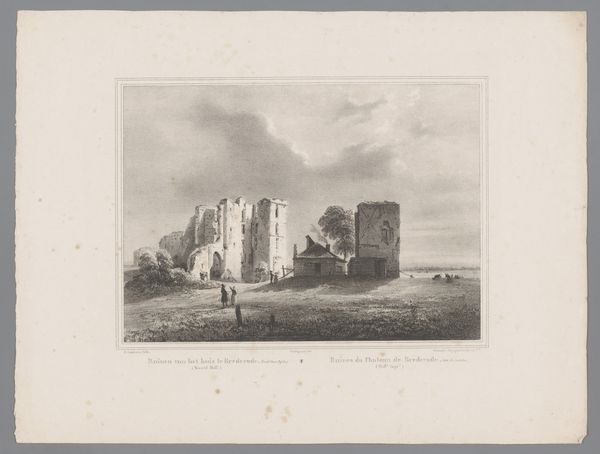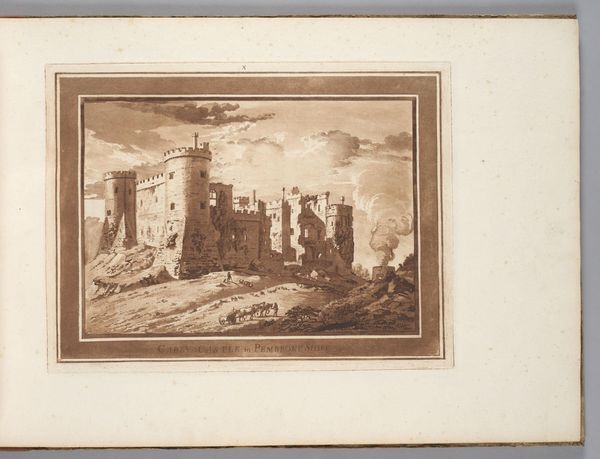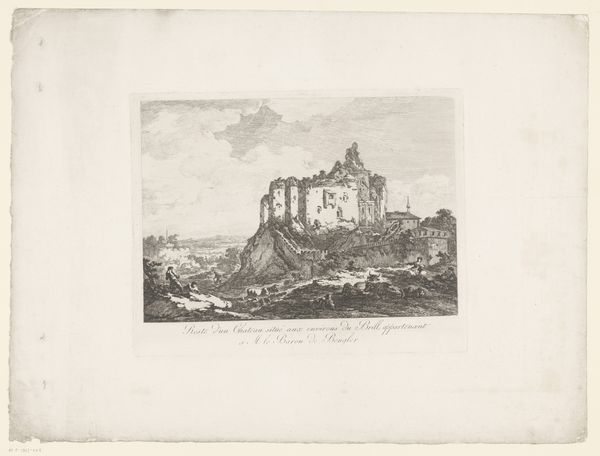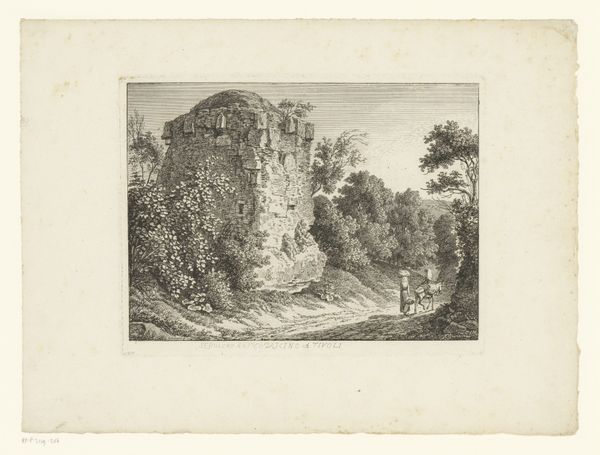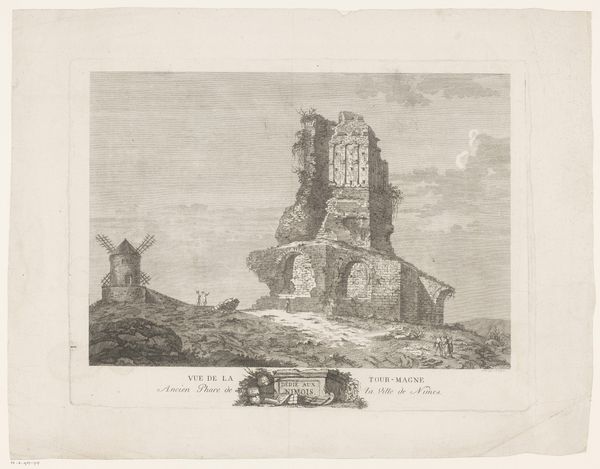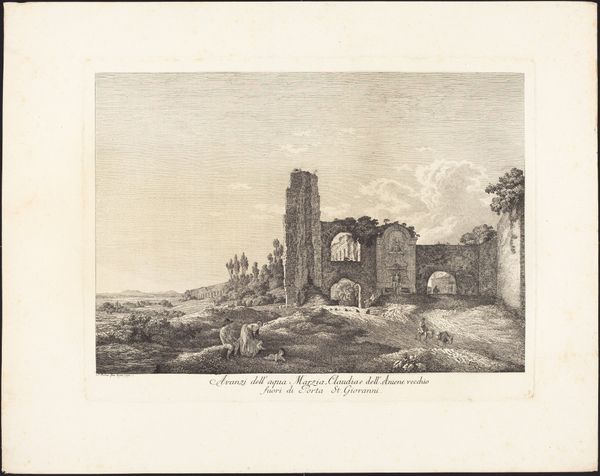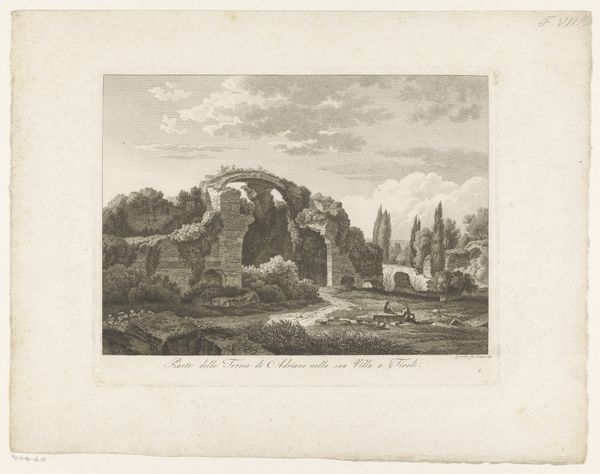
drawing, print, etching, paper
#
drawing
# print
#
etching
#
landscape
#
paper
#
coloured pencil
#
romanticism
#
cityscape
#
history-painting
Dimensions: 330 × 448 mm (sheet)
Copyright: Public Domain
M. Dubourg made this print, Tomb of Horath, plate six from the Ruins of Rome, in the early 19th century. The prints in this series exemplify the fashion for picturesque views of ancient ruins. Made in Italy at a time when the peninsula was beginning to be unified, the image participates in a broader European rediscovery of antiquity. Ruins became potent symbols of the past and were newly appreciated for their aesthetic qualities, a far cry from previous periods where they might have simply been a source of building materials. The art market played a crucial role in shaping this vision of Rome, and the imagery of ruins served various ideological purposes, from celebrating the grandeur of the past to contemplating the transience of empires. Dubourg’s aquatint print, with its subtle coloring, contributed to a visual culture that romanticized ruins. To truly understand the print, one must investigate the prints market of the time. Catalogues, travel accounts, and architectural treatises are all valuable resources for understanding the social life of images like this one.
Comments
No comments
Be the first to comment and join the conversation on the ultimate creative platform.
